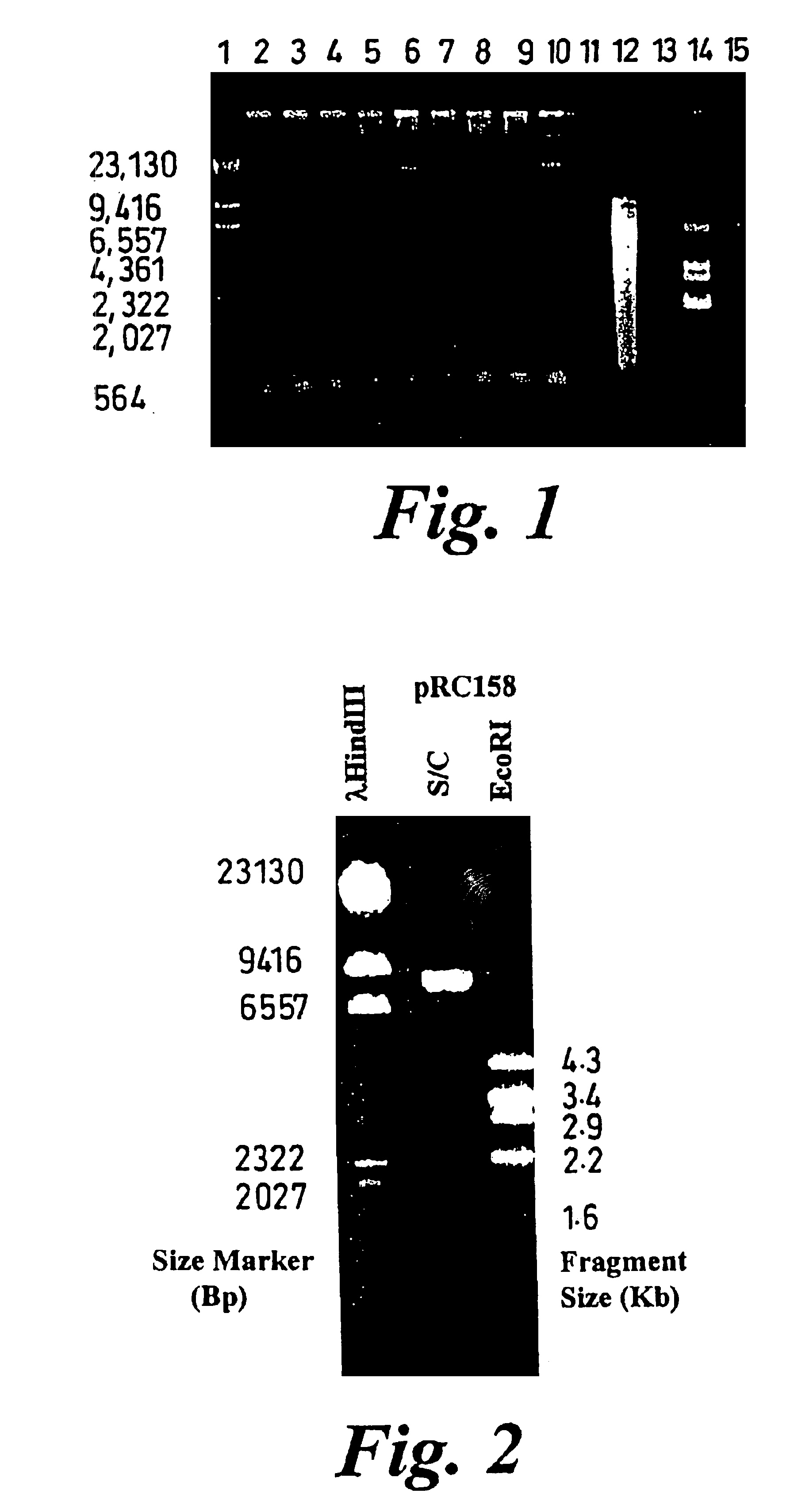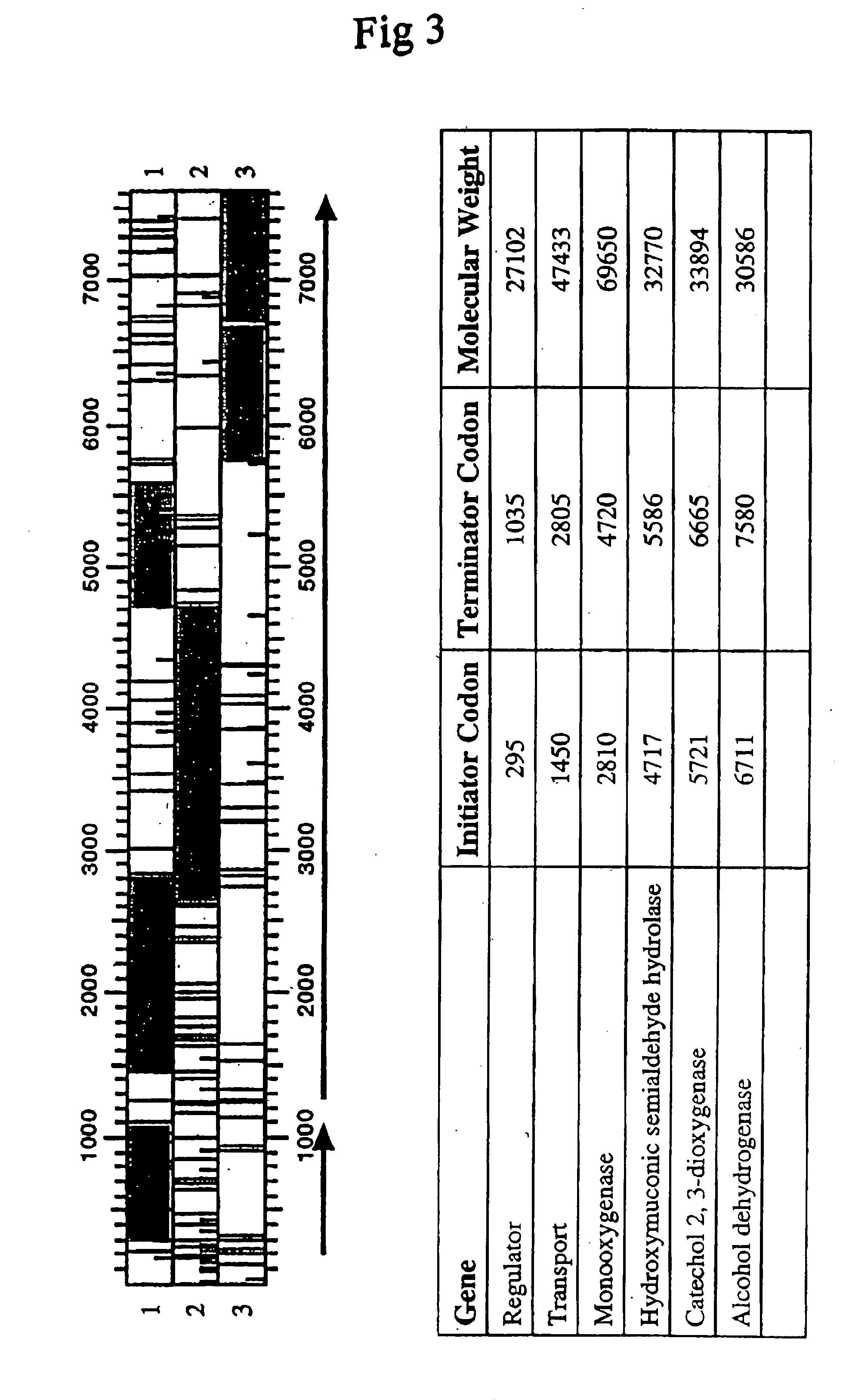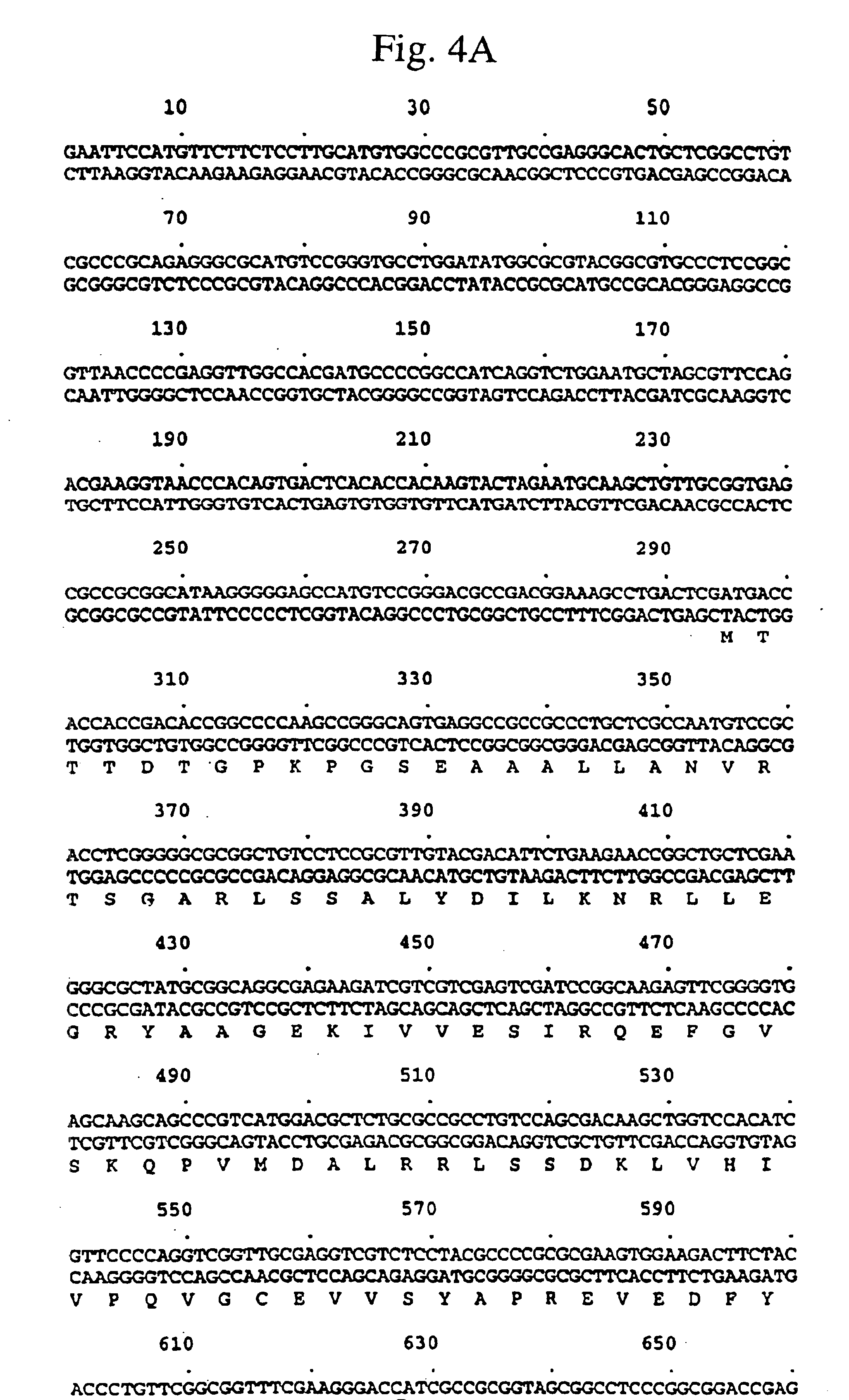Biosensor materials and methods
a biosensor and material technology, applied in the field of biosensor materials and methods, can solve the problems of insufficient sensitive or specific methods, insufficient robustness of methods, and inability to achieve continuous on-site analysis of a variety of environmental matrices at reasonable cost, so as to minimise the difficulty of host restriction and reduce the time of
- Summary
- Abstract
- Description
- Claims
- Application Information
AI Technical Summary
Benefits of technology
Problems solved by technology
Method used
Image
Examples
example 1
A Novel Medium for Oligotrophic Screening
"MMRN" is prepared as a multicomponent stock to avoid the production of uncharacterised compounds during autoclaving. A "basic salts" stock is prepared containing 6 g / L Na.sub.2 HPO.sub.4 ; 3 g / L KH.sub.2 PO.sub.4 ; 1 g / L NaCl; 4 g / L (NH.sub.4).sub.2 SO.sub.4 ; adjusted to pH 7.4 and made up to 989 mls with distilled water and autoclaved. A "100.times.A salts" solution is prepared consisting of 20 g / L MgSO.sub.4 ; 2000 mg / L FeSO.sub.4.7H.sub.2 O; 200 mg / L FeCl.sub.3 ; 200 mg / L MnSO.sub.4.H.sub.2 O is prepared in distilled water and autoclaved. A "1000.times.B salts" solution consisting of 500 mg / L ZnSO.sub.4.7H.sub.2 O; 200 mg / L CuCl.sub.2.multidot.2H.sub.2 O; 200 mg / L Na.sub.2 B.sub.4 O.sub.7.10H.sub.2 O; 100 mg / L (NH.sub.4)7 Mo.sub.6 O.sub.24.4H.sub.2 O is prepared in distilled water and autoclaved. To prepare 1 litre of MMRN, sterile solutions of 989 mls basic salts, 10 mls 100.times.A salts, 1 ml 1000.times.B salts are combined. For solid...
example 2
Isolation of Novel Strains of Mycolic Acid Containing Bacteria from Environmental Samples Using an Oligotrophic Screen and MMRN
Novel strains are a source of genetic diversity from which biosensors specific for particular xenobiotic compounds can be constructed. To isolate mycolic acid bacteria, for example Rhodococcus / Nocardia, from an environmental matrix such as soil, a rapid isolation technique is required. Isolation of bacteria from soil using standard laboratory media containing eutrophic levels of carbon preselects for eutrophic bacteria which can grow rapidly under these conditions. Oligotrophic bacteria such as Rhodococcus / Nocardia are rarely successfully isolated on such rich media. This can be carried out using MMRN to specifically enrich for and subsequently purify strains of mycolic acid-containing bacteria which encode catabolic pathways whose expression is induced by a given xenobiotic. This methodology identifies molecules which are not only substrates, but are necess...
example 3
Method for Isolation of Total DNA from Mycolic Acid Bacteria
Bacterial strains were inoculated into 10 mls of MMRN supplemented with 5000 .mu.M glucose 2% w / v L-glycine and incubated at 28.degree. C. for 30 to 40 hours. This medium supports relatively rapid growth of mycolic acid bacteria cells. The L-glycine present is misincorporated into peptidoglycan cell wall substantially weakening its resistance to osmotic shock (Katsumata, et al., 1984). Growth on MMRN appears to enhance the uptake of L-glycine and its apparent misincorporation into the cell arabinogalactan. During this growth phase, mycolic acid bacteria produce extensive surfactants which cause the accumulated biomass to clump into pellicles and exhibit a strong surface tension effect. These pellicles, which are highly resistant to lysozyme, may be broken up and the concentration of biosurfactants substantially reduced by washing the cell pellet in several culture volumes of 10 mM Tris pH8.0; 0.1 k Tween 80 and finally resu...
PUM
| Property | Measurement | Unit |
|---|---|---|
| Electrical resistance | aaaaa | aaaaa |
| Strain point | aaaaa | aaaaa |
Abstract
Description
Claims
Application Information
 Login to View More
Login to View More - R&D
- Intellectual Property
- Life Sciences
- Materials
- Tech Scout
- Unparalleled Data Quality
- Higher Quality Content
- 60% Fewer Hallucinations
Browse by: Latest US Patents, China's latest patents, Technical Efficacy Thesaurus, Application Domain, Technology Topic, Popular Technical Reports.
© 2025 PatSnap. All rights reserved.Legal|Privacy policy|Modern Slavery Act Transparency Statement|Sitemap|About US| Contact US: help@patsnap.com



